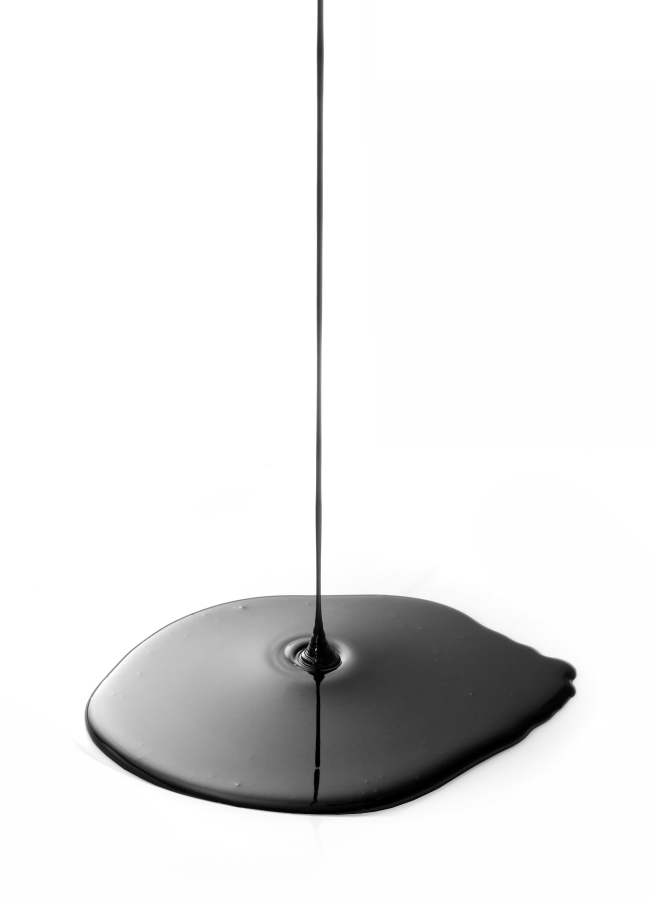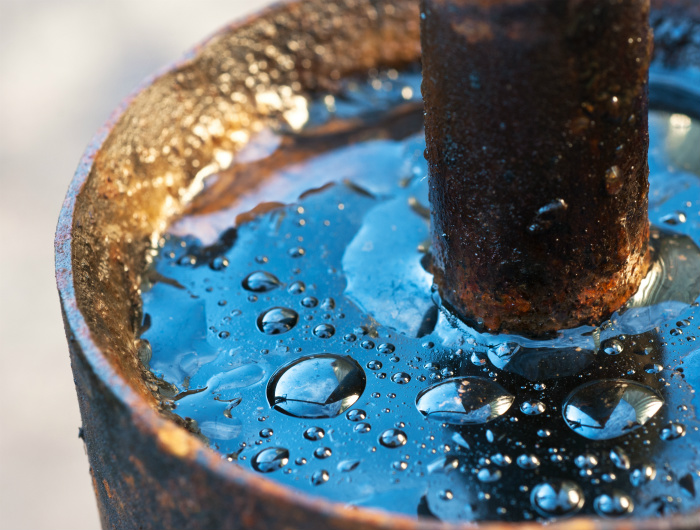Saying that Non-Destructive Testing is absolutely necessary for proper maintenance of chillers and chilled water plants’ ancillary equipment, Dan Mizesko initiates a series on the subject, beginning with oil analysis, as part of predictive maintenance.

Dan Mizesko is the Managing Partner at Al Shirawi US Chiller Services
For the next couple of months I have decided to focus on Non-Destructive Testing (NDT) for the HVAC sector. It’s the perfect season to implement a full NDT programme. I will, therefore, highlight one predictive technology each month.
Predictive maintenance attempts to detect the onset of a degradation mechanism with the goal of correcting the degradation before significant deterioration occurs in the component or equipment. The diagnostic capabilities of predictive maintenance technologies have increased in recent years, with advances made in sensor technologies. These advancements, breakthroughs in component sensitivities, size reductions and, most importantly, cost, have opened up an entirely new area of diagnostics to the O&M practitioner.
As with the introduction of any new technology, proper application and training is of critical importance. This need is particularly true in the field of predictive maintenance technology, which has become increasingly sophisticated and technology-driven.
Oil condition is most easily determined by measuring viscosity, acid number and base number
Most industry experts would agree (as well as most reputable equipment vendors) that equipment for testing should not be purchased for in-house use, if there is no serious commitment to proper implementation, operator training and equipment monitoring and repair. If such a commitment cannot be made, a site is well-advised to seek other methods of programme implementation. A preferable option may be to contract for these services with an outside specialist chiller services company that offers NDT by certified chiller and HVAC specialists, and rely on their equipment and expertise. This month I will discuss oil analysis.
Oil analysis – a diagnostic tool

Image credit: Shutterstock
One of the oldest predictive maintenance technologies still in use today is that of oil analysis. Oil analysis is used to define three basic machine conditions related machine’s lubrication or lubrication system. First is the condition of the oil. That is, will its current condition lubricate per design? Testing is performed to determine lubricant
viscosity, acidity, etc., as well as other chemical analyses, to quantify the condition of oil additives like corrosion inhibitors. Second is the lubrication system condition. That is, have any physical boundaries been violated, causing lubricant contamination? By testing for water content, silicon, or other contaminants (depending on the system design), lubrication system integrity can be evaluated. Third is the machine condition itself. By analysing the wear particles existing in the lubricant, machine wear can be evaluated and quantified.
In addition to system degradation, oil analysis performed and trended over time, can provide indication of improperly performed maintenance or operational practices. Introduction of contamination during lubricant change- out, improper system flush-out after- repairs, addition of improper lubricant and improper equipment operation, are all conditions that have been found by the trending and evaluation of oil analysis data.
Several companies provide oil analysis services. These services are relatively inexpensive, and some analysis laboratories can provide analysis results within 24 hours. Some services are currently using the Internet to provide quick and easy access to the analysis reports.
Increases in specific wear metals can mean a particular part is wearing or wear is taking place in a particular part of the machine
Analysis equipment is also available, should a facility wish to establish its own oil analysis laboratory. Regardless of whether the analysis is performed by an independent laboratory or by an in-house team, accurate results require proper sampling techniques. For this reason, samples should be taken from an active, low-pressure line, ahead of any filtration devices. For consistent results and accurate trending, samples should be taken from the same place in the system each time. Using a permanently installed sample valve is highly recommended.
Most independent laboratories supply sample containers, labels and mailing cartons. If the oil analysis is to be done by a laboratory, all that is required is taking the sample, filling in information, such as the machine number, machine type and sample date, and sending it to the laboratory. If the analysis is to be done on-site, analytical equipment must be purchased, installed and standardised. Sample containers must be purchased and a sample information form created and printed.
The most common oil analysis tests are used to determine the condition of the lubricant, excessive wearing of oil-wetted parts and the presence of contamination. Oil condition is most easily determined by measuring viscosity, acid number and base number.
Additional tests can determine the presence and/or effectiveness of oil additives, such as anti-wear additives, antioxidants, corrosion inhibitors and anti-foam agents. Component wear can be determined by measuring the amount of wear metals, such as iron, copper, chromium, aluminum, lead, tin and nickel. Increases in specific wear metals can mean a particular part is wearing or wear is taking place in a particular part of the machine.
Contamination is determined by measuring water content, specific gravity and the level of silicon. Often, changes in specific gravity mean that the fluid or lubricant has been contaminated with another type of oil or fuel. The presence of silicon – usually from sand – is an indication of contamination from dirt.
TEST TYPES:
Karl Fischer Water Test
The Karl Fischer Water Test quantifies the amount of water in the lubricant.
Significance: Water seriously damages the lubricating properties of oil and promotes component corrosion. Increased water concentrations indicate possible condensation, coolant leaks, or process leaks around the seals.
ICP spectroscopy
This measures the concentration of wear metals, contaminant metals and additive metals in a lubricant.
Significance: It measures and quantifies the elements associated with wear, contamination and additives. This information assists in determining the oil and machine condition.
Particle count
This measures the size and quantity of particles in a lubricant.
Significance: Shows oil cleanliness and performance. An increase in particle size and gravity is an indication of a need for oil service.

Image credit: Shutterstock
Viscosity test
This measures a lubricant’s resistance to flow at a specific temperature.
Significance: Viscosity is the most important physical property of oil. Viscosity determination provides a specific number to compare to the recommended oil in service. An abnormal viscosity (±15%) is usually indicative that lubricant replacement is required.
Fourier transform (FT)-IR spectroscopy
This test measures the chemical composition of a lubricant.
Significance: Molecular analysis of lubricants and hydraulic fluids by FT-IR spectroscopy produces direct information on molecular species of interest, including additives, fluid breakdown products and external contamination.
Direct read ferrography
This measures the relative amount of ferrous wear in a lubricant.
Significance: The direct read gives a direct measure of the amount of ferrous wear metals of different sizes present in a sample. If trending of this information reveals changes in the wear mode of the system, then action is required.
Analytical ferrography
This allows analysts to visually examine wear particles present in a sample.
Significance: A trained analyst visually determines the type and severity of wear deposited on to the substrate by using a high-magnification microscope. The particles are readily identified and classified according to size, shape and metallurgy.
Total acid number
This measures the acidity of a lubricant.
Description: Organic acids, a by-product of oil oxidation, degrade oil properties and lead to corrosion of the internal components. High acid levels are typically caused by oil oxidation.
A single failure prevented by the performance of oil analysis can easily pay for a programme for several years
Although independent laboratories generally perform oil analysis, some vendors do provide analysis equipment that can be used on-site to characterise oil condition, wear particles and contamination. These devices are generally composed of several different types of test equipment and standards, including viscometers, spectrometers, oil analysers, particle counters and microscopes. On-site testing can provide quick verification of a suspected oil problem associated with critical components, such as water contamination. It can also provide a means to quickly define lubricant condition to determine when to change the lubricant medium. For the most part, detailed analysis will still require the services of an independent laboratory.
All equipment with motors 7.5 hp or larger, and critical or high-cost chillers and built-up unitary equipment should be evaluated for routine lubricating oil analysis from quarterly to annually, depending on test results. All hydraulic systems should be analysed on a quarterly basis. Typical equipment applications include:
For facilities utilising a large number of rotating machines that employ circulating lubricant, or for facilities with high-dollar equipment using circulating lubricant, few predictive maintenance technologies can offer the opportunity of such a high-return for dollars spent. Analysis for a single sample can run from USD 15 to USD 100, depending on the level of analysis requested. Samples are typically sent through courier service to the testing centre. Given the high equipment replacement cost, labour cost and downtime cost involved with a bearing or gearbox failure, a single failure prevented by the performance of oil analysis can easily pay for a programme for several years.
Training for lubricant and wear particle analysis typically takes place via vendors. Because the analysis is usually conducted by outside vendors at their location, training consists of proper sampling techniques (location and frequency), as well as requisite sample handling guidance.
I would discourage using a time-based method and recommend a condition-based method, especially in this region. I feel that a condition-based oil analysis programme could save you money on unnecessary oil changes, and allow you to know the condition of your equipment before a costly breakdown occurs.
Dan Mizesko is the Managing Partner of Al Shirawi US Chiller Services. He can be contacted at dan@uschillerservices.com
[div class=”row”]
[div class=”col-md-10 col-md-offset-1 content-sidebox”]
CPI Industry accepts no liability for the views or opinions expressed in this column, or for the consequences of any actions taken on the basis of the information provided here.
[end-div]
[end-div]
Copyright © 2006-2025 - CPI Industry. All rights reserved.